2700 Maury Street
1874
Maury and Mount Olivet cemeteries are conjoined municipal burying grounds in South Richmond; historically white and African-American, respectively. They occupy 96 gently rolling acres that are entered from an industrial stretch of Maury Street through two granite pier columns. Hopkins Road defines the south border of the cemeteries while Perdue Street is the eastern boundary. Various industrial buildings define the western side.
Soon after it declared that burials could not take place within the city limits, Manchester officials established the cemetery in 1874 on the suburban site of the former “Buck Hill” country estate. A John Anderson was the first white person to be interred in Maury while Monroe Davis was the first African-American to be placed there. Soon after its opening there were 69 white and 25 African-American graves, respectively.
As Manchester, which had received town status in 1769, continued to develop during the final quarter of the 19th century, small private and family cemeteries had been scattered willy-nilly throughout residential and commercial neighborhoods. One graveyard, enclosed by a 29′ x 29′ brick wall for instance, had been active at 9th Street on the south side of Hull Street since 1832; it contained both white and African-American graves. Another private burial ground was opened on 13th Street between Hull and Bainbridge streets in 1851 but was closed in 1881 when the site for 13th Street was graded; its human remains were reinterred in Maury. And in 1901, the Goff family sued a developer who built a home on land that apparently contained a burial ground.
The cemetery was named for Matthew Fontaine Maury (1806-1873), a prominent Virginia-born scientist and pioneering oceanographer who charted the world’s oceans and developed technology for the trans-Atlantic cable. He also wrote the first comprehensive textbook on oceanography. He served in the United States navy from 1825 to 1861. While he opposed the South’s secession from the Union 1861, rather than oppose his native state, he joined the Confederate cause. One of his inventions during the Civil War was an early torpedo that served the Confederate navy. After the war he taught at Virginia Military Institute.
In 1910, when Richmond and Manchester were merged into a single jurisdiction, Maury became a Richmond city-owned and operated graveyard. A number of residents complained at this time that the designation of “colored section” was demeaning. This led to the renaming of a section of the burial ground Mount Olivet Cemetery. The name derives from the former olive grove east of Jerusalem that has been a Jewish burial ground for 3,000 years. Many believe that this was the place from which Jesus ascended into heaven. Ballard T. Edwards, a freedman and one of the first African-Americans elected as a delegate in the Virginia General Assembly, is buried at Mount Olivet, along with a number of other prominent African-American clergymen.
Unlike Richmond’s more famous and verdant large cemeteries, Maury has relatively few shade trees and little well-tended shrubbery. Its gently-rolling terrain however, makes it a welcome oasis in an industrial section of the city. The visual center of the grounds is a paved circle atop a rise, around which a few concentric roads define grave plots. Also atop this ridge are monuments to the veterans and dead of World War I and South Richmonders who served in World War II. There are the remains of terraces that once allowed people to enjoy views of the Manchester and Richmond skylines.
A modest civic investment in trees, other plantings, and better maintenance would bring immediate benefits to the solid bones of this 150 year-old sacred and civic space.
ES

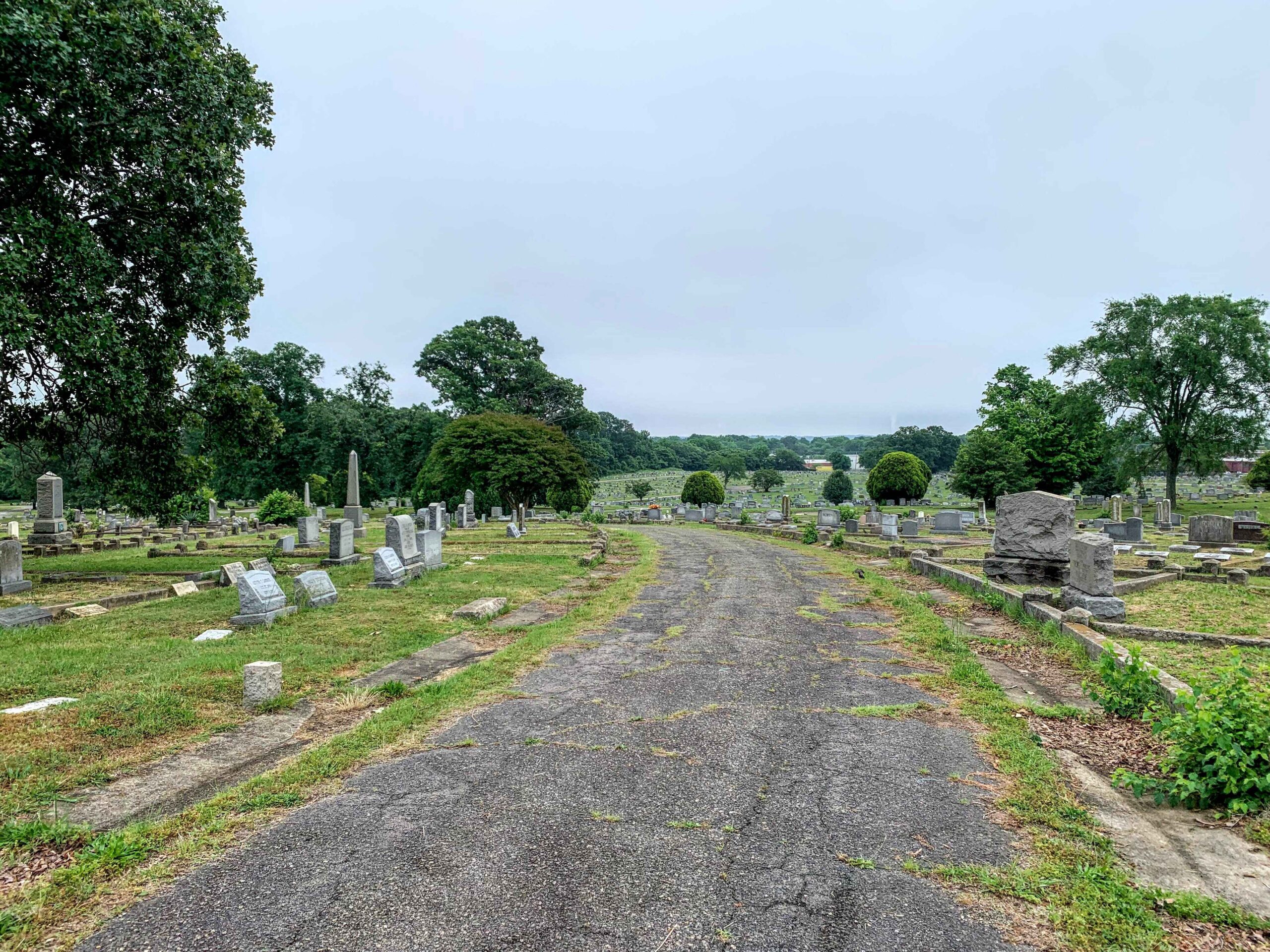

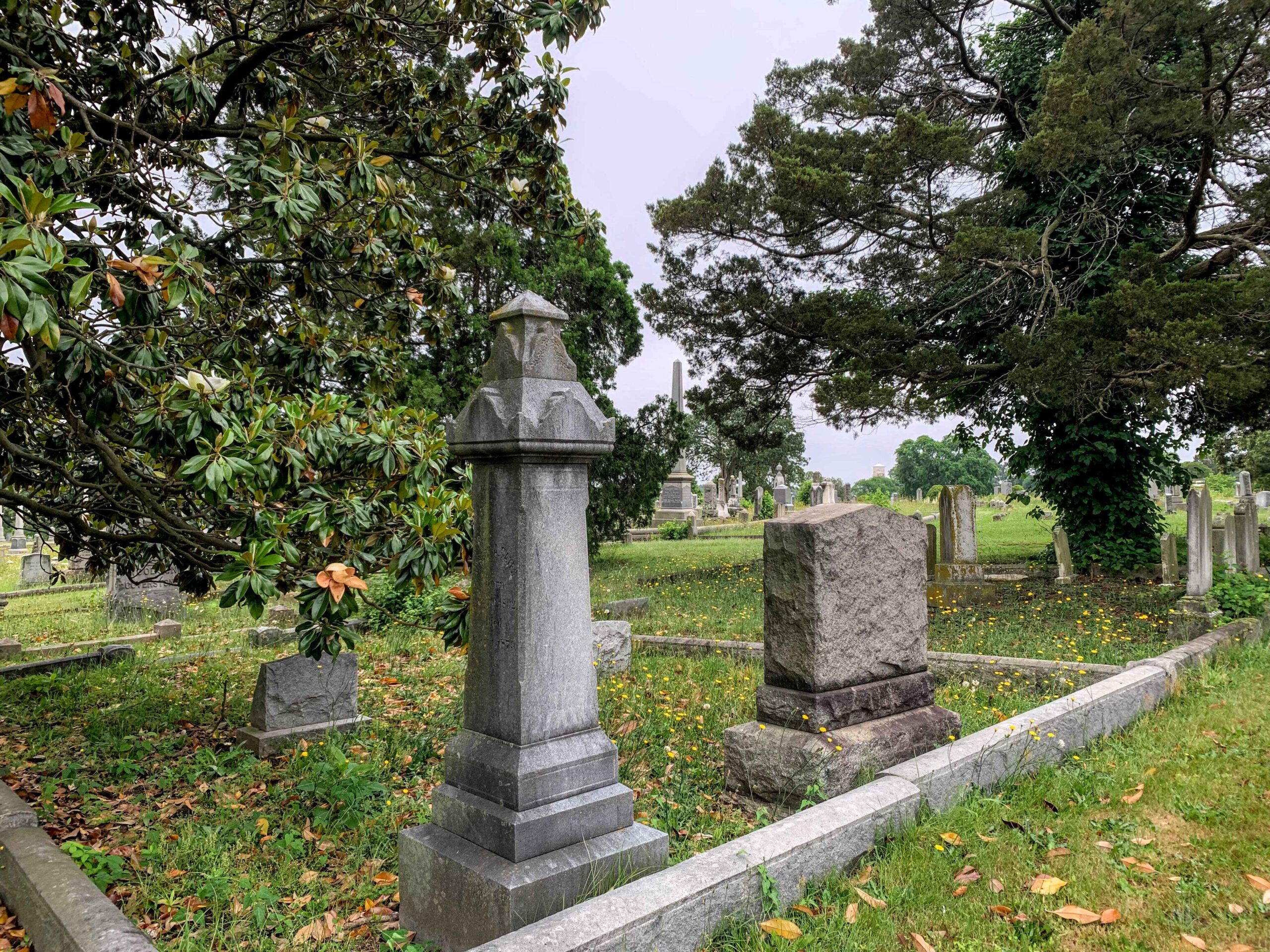

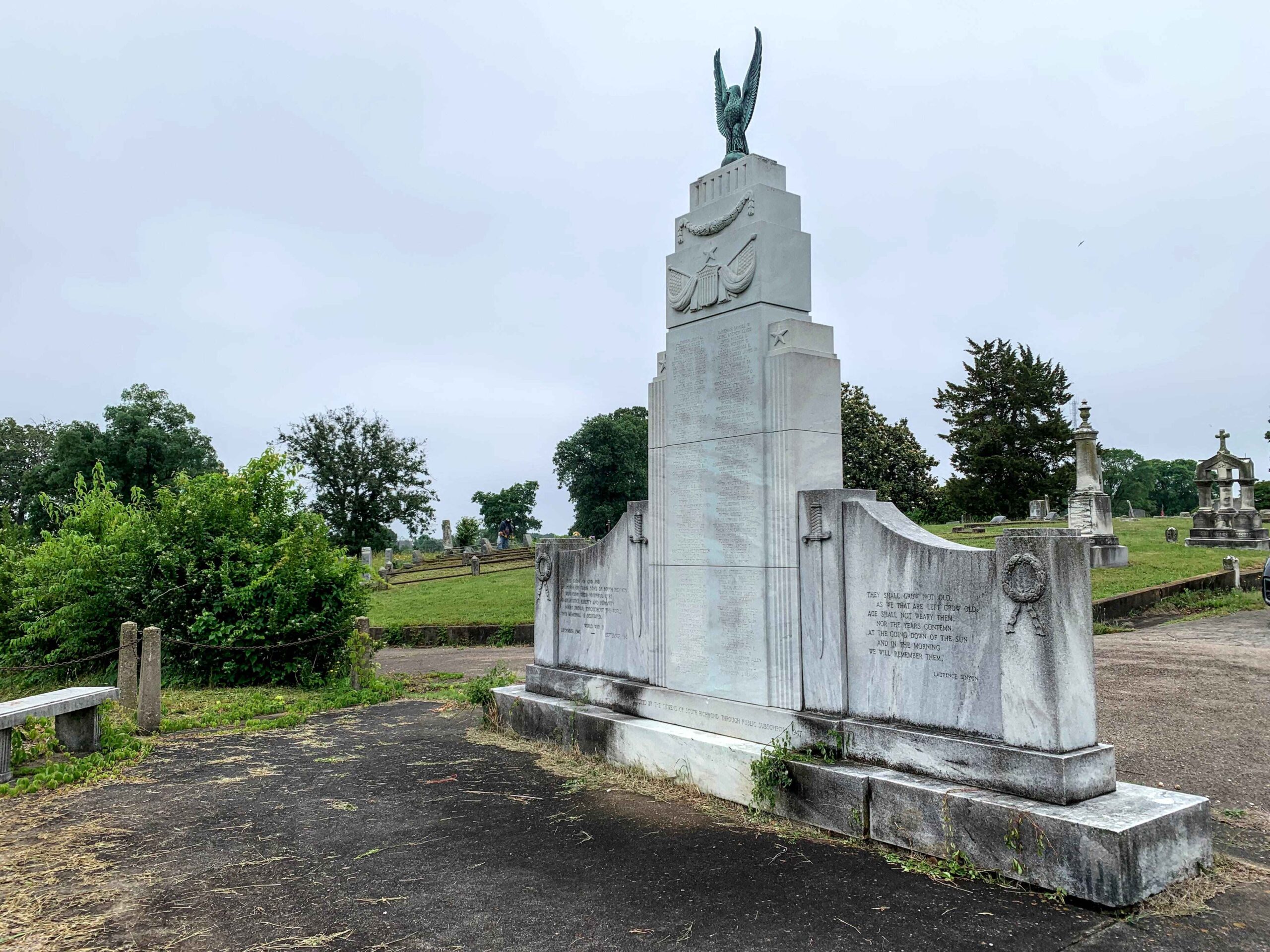
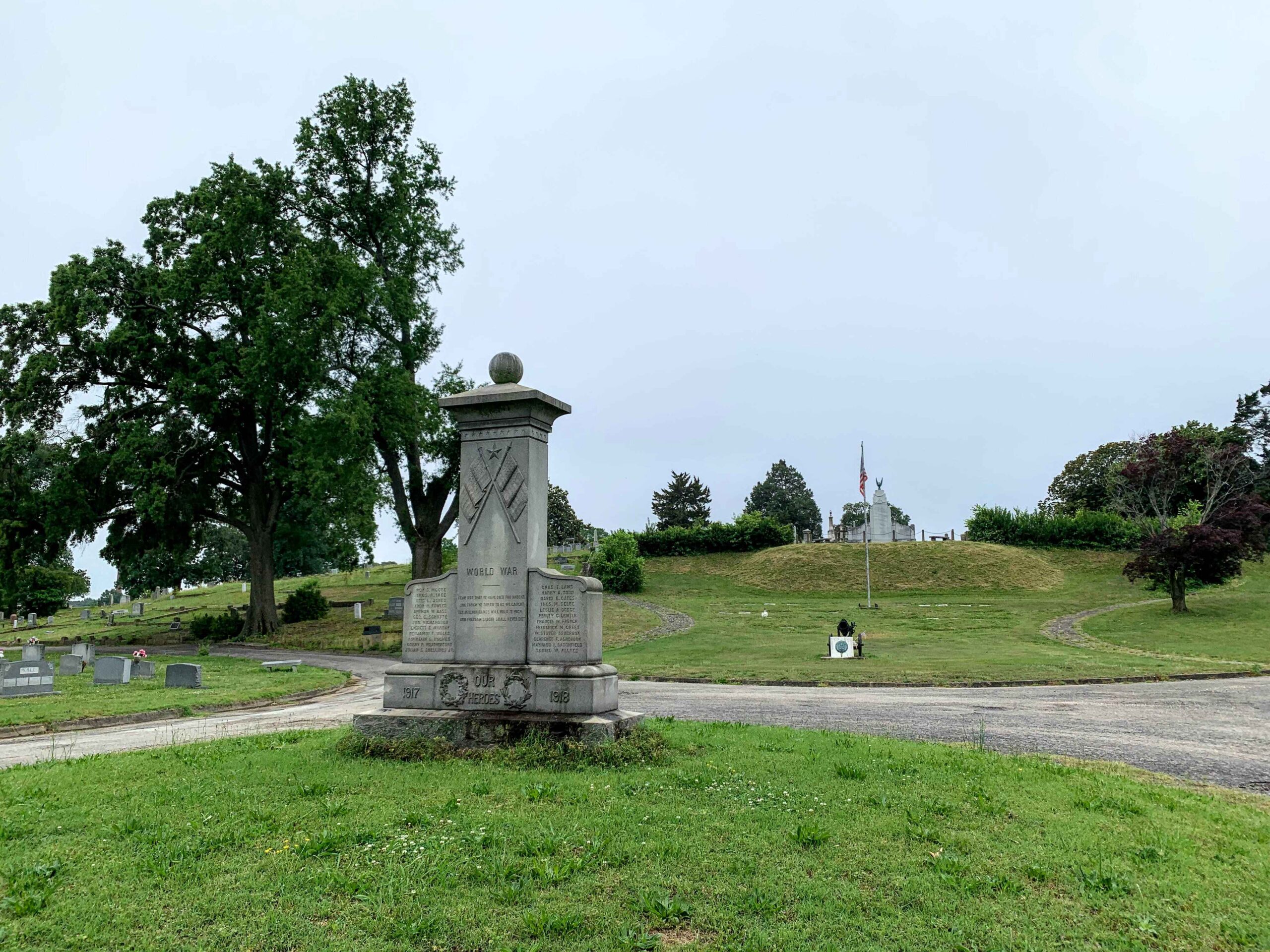

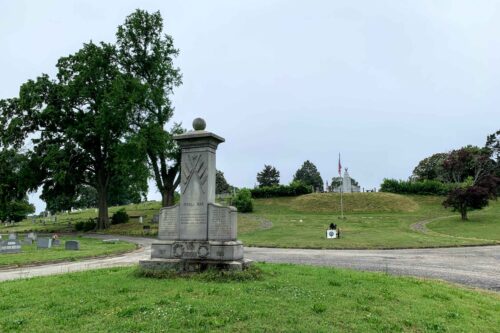
Write a Comment